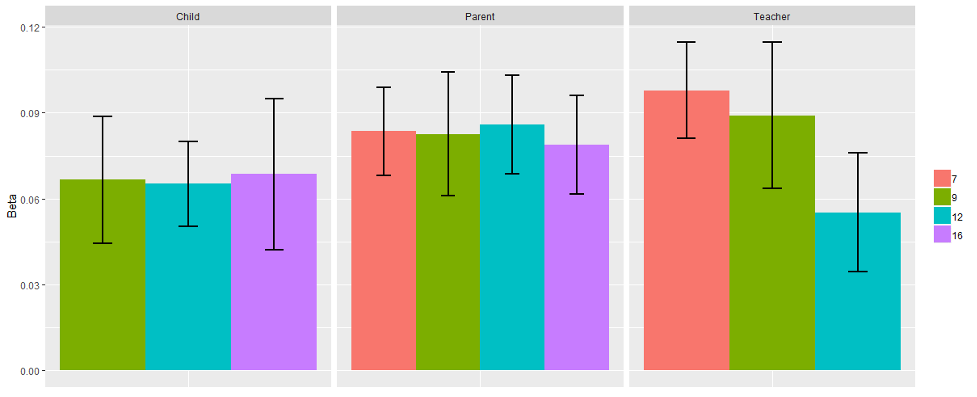11/03/2021
The genetics of general psychopathology in childhood and adolescence
The p factor
Individuals who score highly for certain psychopathological traits tend to also score highly on others. Many researchers think that this overlap may be explained by a single factor that reflects general liability to a wide range of traits: the p factor. This is not a new idea, but it has recently become a popular research area for developmental psychologists and behavioural geneticists.
Twin and family studies suggest that covariation between forms of childhood psychopathology can be substantially accounted for by genetic risk factors common across disorders. However, little is known about the genetic and environmental architecture of general psychopathology across childhood and adolescence, and whether a general p factor in childhood relates genetically to adult mental health. The wealth of TEDS data over 25 years provides a perfect opportunity to take a systematic look at this.
We had three key questions and answers
1) How does p manifest across diverse measures, raters, ages?
We found a general psychopathology factor could be identified across different measures, raters and ages (7, 9, 12 and 16 years). Furthermore, this p factor was highly heritable at each life stage. For example, we found that parent-reported measures of child psychopathology at age 7 all loaded on a common p factor was 60% heritable.
2) How much do genes and environments contribute to stability in p across ages?
We also found that p at each age was genetically correlated with p at other ages. This indicates that genetic factors explaining individual differences at one age also contribute to individual differences at the other ages.
3) Do polygenic scores, based on risk for typically adult psychiatric disorders, predict p in childhood?
We wanted to see whether the genes influencing the p factor in childhood and adolescence are also linked to general genetic risk for psychiatric disorders in later life. To do this, we created polygenic scores which capture participants’ genetic risk for typically adult psychiatric disorders.
These general risk scores for (mostly) adult psychiatric disorders relate to childhood psychopathology. In the figure below, the bars represent how strongly the genetic risk scores relate to measures of p for each age/rater in TEDS. These associations are consistent across ages in childhood and adolescence, and across raters. The variance explained by ‘polygenic p’ is low but is within the expected range considering previous research in this area.
This suggests that genetic risk for psychiatric disorders emerges in childhood, in the form of continuously measured behaviour problems.

The idea that a common genetic liability for psychopathology has genetic influences across the lifespan has implications for research and clinical practice. For example, the p factor (polygenic or phenotypic) might be used as a control variable in research studies aiming at isolating risk factors for specific diseases. In practice, identification of individuals at risk may be easier by assessing general psychopathology dimensions. Clinicians might want to assess symptoms from a variety of disorders, not only the one diagnosed (see also https://onlinelibrary.wiley.com/doi/abs/10.1111/jcpp.13063).
The full paper summary can be found in our EDIT Lab blog page.
